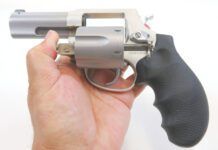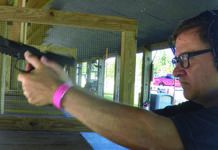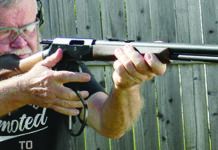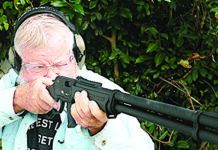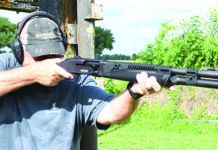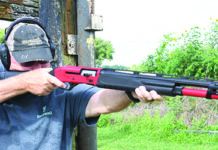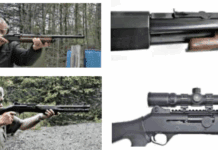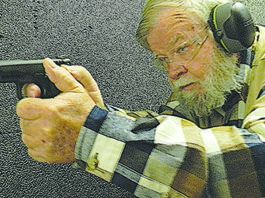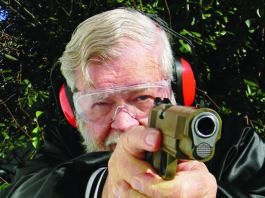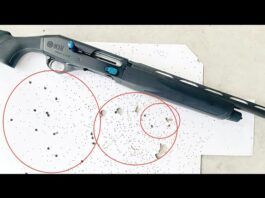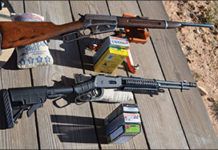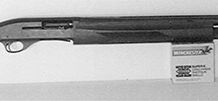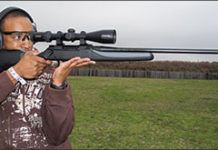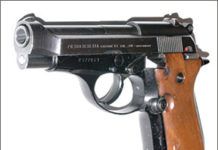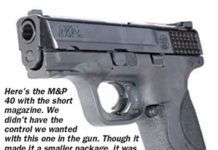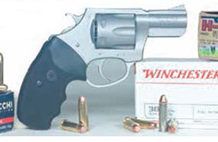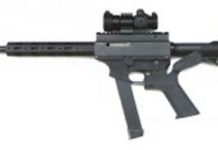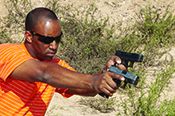Space Age versus Old Age: We Compare Two Lever Actions
For some shooters, Hollywood seems to have become a prime factor in choosing the style and type of firearm finding favor on the range and in the field. This truism seems to be particularly prevalent when dealing with lever-action rifles. In the old days, Westerns ruled the movie screens and a true-blue cowboy had three good companions - "my rifle, my pony and me" - as sung by Dean Martin in the classic western Rio Bravo.
One of those good companions for quite a few cowboys and hunters of that time period was the Winchester Model 1895. The Model 1895 was the first Winchester rifle to feature a box magazine located underneath the action instead of the tubular magazine design, allowing for the use of military and hunting cartridges with pointed bullets, and was the last lever-action rifle to be designed by legendary gunsmith and inventor John M. Browning. For our test, we were able to obtain a vintage Model 1985 in 30-40 Krag that dates back to the early 1900s, when it sold for a mere $25. The specific firearm we used in the test had spent countless hours in a rifle scabbard on horseback or on the side of a truck bouncing through the South Texas brush near Laredo and has accounted for more jack rabbits, coyotes and whitetail deer than can easily be counted.
On the more modern side of the Hollywood depiction of a lever-action shooter is the recently introduced Mossberg Model 464 ZMB 30-30 Win., offering a variety of high-tech features to handle the highly promoted zombie apocalypse. Short and quick with the ability to add all kinds of optics and lights for effective firepower to stop the undead — if they ever make their appearance — or varmints and deer-sized big game, the Mossberg has upgraded the lever-action rifle to a space-age weapon.
Although the calibers are identical — the 30-40 Krag is also known as the 30 U.S. — the Krag provides a little more punch with a larger bullet than the 30-30 Win. Both cartridges are considered prime brush guns for handling small game up to animals the size of a whitetail deer at ranges of 100 yards or less.
It should be noted that while quite a few rifle cartridges are hard to find with the ongoing high ammo demand, the 30-30 rounds are generally easier to obtain than the veteran 30-40 Krag. We were able to obtain three varieties of 30-30 (including the specially marketed Hornady Zombie Max designed for use on the undead) and two brands of 30-40 Krag for our tests. Here's our report:
Fixing The S&W/Mossberg Model 1000
Many people still shoot the S&W/Mossberg Model 1000, but it may require your attention. Here are the basics of getting this autoloader operational again.
Versatile 243 Win. Bolt Actions: Howas 2N1 Versus Thompson
Two High-Capacity 380 ACPs:Beretta and CZ Square Off
ISSC MK22 Desert Folding Stock Rifle ISSC211003 22 LR
One reason to produce rimfire replicas of military weapons is to help familiarize the shooter with how each gun operates at a fraction of the price of buying and feeding the corresponding centerfire model. If this isn't fun enough, then consider the history and the innovation that each rifle offers the shooter ahead of simpler rimfire designs. Gun Tests magazine last tested military-replica semiautomatic rimfire rifles in the February 2010 issue ("Tactical-Style 22 LR Carbines: Ruger, S&W, Legacy Duke It Out"), with the majority of the roster being taken up by the AR-15 design. In a newer test they evaluated the $609 German-made ISSC MK22 Desert Tan rifle with folding stock, a replica of the SCAR (Special Operations Forces Combat Assault Rifle). The MK22 was imported by Legacy Sports International of Reno, Nevada.
Interarms Bulgarian Style AK-74 5.45x39mm
The AK-47 is one of the most efficient and widespread assault rifles ever built. Soviet weapons designer Mikhail Timofeevitch Kalashnikov conceived of the basic mechanism while recovering from wounds he received in a tank battle in October 1941 near Bryansk. Though his idea pivoted off the German concept of the assault rifle, Kalashnikov came up with his own design that led to several variants of the mechanism being built in the 1940s. In 1946, substantial revisions to working prototypes by Kalashnikov's assistant Aleksandr Zaytsev made the resulting 1947 model, the AK-47, especially reliable. The Soviet army officially adopted the AK-47 chambered in the 7.62x39mm Soviet as its battle rifle in 1949, and large-scale distribution of the weapon began in the mid-1950s.
Mid-Size Compact Forties: Smith & Wesson Edges Out Kahr
Gun Test's Idaho test team has spent a lot of time looking at relatively tiny 9mm handguns over the past year. We've found there are a few good designs that permit the use of some relatively hot ammo in the small 9mm packages. But some people want still more power, so we've decided to sample a few of the forties out there. For this test we looked at a S&W M&P Compact 40 ($569) and a Kahr CW40 ($485). They are a bit larger than the tiny nines we've been trying, and there are good reasons for that. The 40 S&W is a lot more cartridge than the 9mm Parabellum, and when forties get smaller than these two test guns, recoil is entirely unfriendly. However, Kahr and a few other makers do offer smaller guns in this caliber if you must have one. We tested these two compact forties with three types of ammo, Remington 155-grain JHP, Black Hills 165-grain JHP, and American Eagle 180-grain FMC. Here's what we found.
Boot-Gun Revolver Showdown: 38 Specials Take on 9mms
The 38 Special revolver has long been a standard as a back-up and concealed-carry handgun. As part of our new Bargain Hunter series, we wanted to challenge the conventional notion that a wheelgun chambered in 38 Special should be the de facto winner of any boot-gun showdown simply because it has always won those battles in the past. In the same power range as the 38 Special is the 9mm Luger (aka 9mm Parabellum or 9x19mm), which has the added benefit of being loaded more widely, often at less cost per round, than the 38 Special. Also, many carbines are chambered for 9mm, which makes it a handy choice for a long gun/handgun duo, even if the handgun is a revolver. To be fair, the 38 Special is also chambered for long guns, primarily lever guns. On the 38 Special's side is the fact that dozens of revolvers from Smith & Wesson, Ruger, Rossi, Charter, Taurus, and many others are chambered for the round, compared to a paltry few 9mms, some of which must use half-moon or moon clips to function. In this two-way test, we evaluated four handguns, three revolvers chambered for 38 Special and two revolvers chambered for 9mm Luger. Certainly, the best gun would win and earn our favor. But we also looked at the cost of consumables to see if, over time, one cartridge had an edge.
Thureon Defense Carbine 9mm
When it comes to personal defense, competition, and recreational shooting, the most popular rifle in America is likely the AR-15 chambered for .223 Remington. But there are still plenty of shooters who prefer the light recoil and low expense of 9mm Luger ammunition. Whereas caliber .223 is strictly the staple of rifle shooters, 9mm carbines are often used by pistol shooters who sometimes use a long gun. There are three basic types of 9mm carbine. They are the 9mm AR-15, semi-automatic versions of submachineguns such as the UZI, and purpose-built 9mm carbines that more or less follow their own rules of design. To answer some of those questions, Gun Tests magazine recently fired the $700 Thureon Defense 9mm.
Their choice of test ammunition was Winchester USA 115-grain FMJ rounds and two loads from Black Hills Ammunition topped with 124-grain bullets. One featured a full-metal-jacketed slug and the other a jacketed hollowpoint driven by a +P charge. Each carbine was tested for accuracy from the 50-yard bench using only their supplied open sights.
Here's what the staff at GT said:
Kel-Tec Sub 2000 9mm
Gunsmithing MAK 90 Rifles
GunReports.com learns about the MAK 90s, one of the most common AK copies in the U.S. today. Here are tips on what to do—and what not to do—if you need to work on one.


